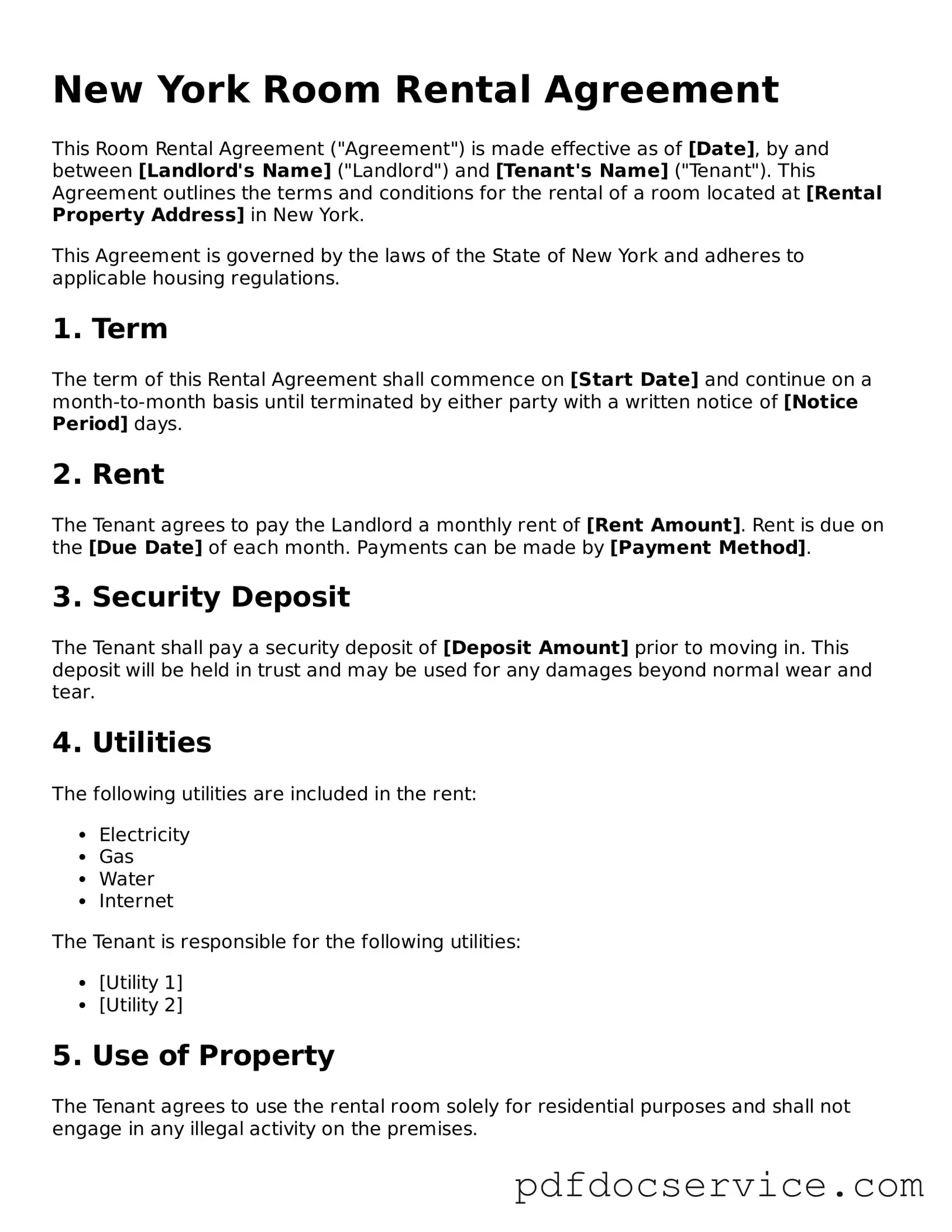What is a New York Room Rental Agreement?
A New York Room Rental Agreement is a legal document that outlines the terms and conditions between a landlord and a tenant for renting a room in a residential property. It specifies the rights and responsibilities of both parties and serves to protect their interests during the rental period.
What key elements should be included in the agreement?
The agreement should include the following key elements:
-
Names of the landlord and tenant.
-
Property address and description of the room being rented.
-
Duration of the rental period.
-
Amount of rent and payment due dates.
-
Security deposit details.
-
Utilities and services included in the rent.
-
Rules regarding guests and common areas.
-
Termination conditions and notice requirements.
Is a security deposit required?
Yes, a security deposit is typically required. In New York, the amount cannot exceed one month's rent. This deposit serves as a safeguard for the landlord against potential damages or unpaid rent. The terms regarding the security deposit should be clearly outlined in the agreement.
How long is the rental period?
The rental period can vary based on the agreement between the landlord and tenant. It may be a month-to-month arrangement or a fixed-term lease, such as six months or one year. Both parties should agree on the duration before signing the agreement.
Can the landlord increase the rent during the rental period?
Generally, the landlord cannot increase the rent during a fixed-term lease unless the agreement specifically allows for it. For month-to-month rentals, the landlord must provide proper notice, typically 30 days, before implementing any rent increase.
What happens if the tenant wants to terminate the agreement early?
If the tenant wishes to terminate the agreement early, they must refer to the termination conditions outlined in the agreement. This may include providing written notice within a specified timeframe. Failure to comply with these terms may result in penalties or loss of the security deposit.
Are verbal agreements enforceable?
While verbal agreements can be legally binding, they are difficult to enforce. A written agreement is highly recommended to ensure clarity and provide evidence of the terms agreed upon by both parties. This helps prevent misunderstandings and disputes.
What are the tenant's responsibilities regarding maintenance?
The tenant is generally responsible for keeping the rented room clean and in good condition. This includes reporting any maintenance issues to the landlord promptly. The specific maintenance responsibilities should be detailed in the rental agreement.
What should a tenant do if they experience issues with the landlord?
If a tenant encounters issues with the landlord, such as failure to make repairs or inappropriate behavior, they should document the incidents and attempt to resolve the matter directly with the landlord. If the issue persists, the tenant may seek legal advice or contact local housing authorities for assistance.
Can the landlord enter the rented room without notice?
In New York, landlords typically must provide reasonable notice before entering a tenant's room, except in emergencies. The agreement should specify the notice period required for non-emergency entries, which is usually 24 hours. This helps ensure the tenant's right to privacy is respected.
